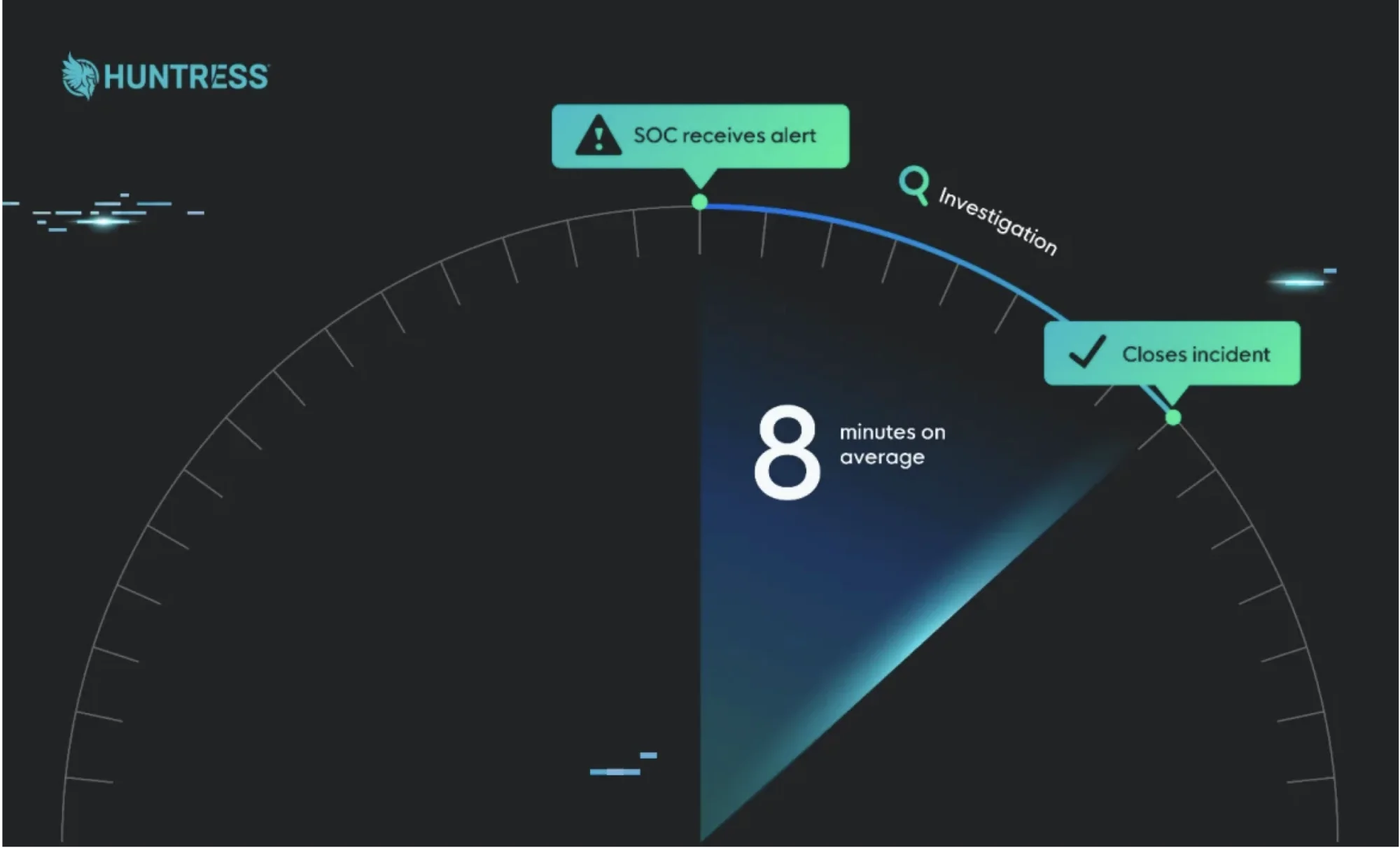Understanding Mean Time to Respond
When cyber threats strike, every second counts. Mean Time to Respond gives security teams a clear way to measure their response effectiveness. Think of it like measuring how quickly a fire department responds to an emergency call — the faster they arrive and put out the fire, the less damage occurs.
The calculation is straightforward: add up all the response times for incidents during a specific period, then divide by the number of incidents. For example, if your team handled three incidents that took 20, 32, and 44 minutes to resolve, your MTTR would be 32 minutes.
Why MTTR Matters in Cybersecurity
Cybersecurity incidents can escalate rapidly. A data breach that takes hours to contain might expose thousands of customer records, while one contained in minutes might only affect a few files. According to the Cybersecurity and Infrastructure Security Agency (CISA), organizations with faster incident response times experience significantly less financial and operational damage.
Performance Measurement
Security teams use MTTR to gauge their effectiveness. Consistently high response times might indicate understaffing, poor processes, or inadequate tools. Tracking this metric over time helps identify improvement trends.
Resource Planning
Understanding your current MTTR helps determine whether you need additional staff, better tools, or improved training. If your team consistently exceeds acceptable response times, it's time to invest in your security infrastructure.
Compliance Requirements
Many regulatory frameworks require organizations to demonstrate timely incident response. MTTR provides concrete evidence of your security team's performance for auditors and compliance officers.
The Four Types of MTTR
While "Mean Time to Respond" is common, the cybersecurity industry actually uses multiple different MTTR measurements:
Mean Time to Respond
The time from incident notification to initial response actions. This measures how quickly your team acknowledges and begins addressing threats.
Mean Time to Repair
The time spent actively working to fix the problem. This excludes waiting periods and focuses purely on hands-on resolution work.
Mean Time to Recovery
The time from incident start to full system restoration. This comprehensive metric includes detection, response, and recovery phases.
Mean Time to Resolve
The time from incident detection to complete resolution, including post-incident activities like documentation and prevention measures.
How to Calculate MTTR
Calculating MTTR requires consistent data collection and clear definitions of when incidents begin and end. Here's a step-by-step approach:
Step 1: Define Your Measurement Period
Choose a consistent timeframe for analysis — monthly, quarterly, or annually. Most organizations start with monthly calculations to identify trends quickly.
Step 2: Identify Incident Start and End Points
Clearly define when the "response clock" starts (usually when the security team receives notification) and when it stops (when the incident is resolved and systems are restored).
Step 3: Collect Response Time Data
Document the total response time for each incident. Modern Security Information and Event Management (SIEM) systems can simplify much of this data collection.
Step 4: Calculate the Average
Add all response times and divide by the number of incidents. Track this metric consistently to identify trends and improvements.
Improving Your MTTR
Organizations can take several steps to reduce their mean time to respond:
Implement Automated Detection
The faster you detect threats, the sooner you can respond. High quality monitoring tools can identify suspicious activity and alert security teams immediately.
Develop Clear Procedures
Well-documented incident response procedures help teams act quickly and consistently. Regular training ensures everyone knows their roles during an emergency.
Invest in Response Tools
Security orchestration and automated response (SOAR) platforms can automate routine response actions, freeing up analysts for complex tasks.
Practice Incident Response
Regular tabletop exercises and simulations help teams refine their response procedures and identify areas for improvement.
Common MTTR Challenges
Security teams often face obstacles when trying to improve their response times:
Alert Fatigue
Too many false positives can overwhelm analysts and slow the response to genuine threats. Tuning detection systems reduce noise and improve focus.
Incomplete Information
Analysts need complete information to respond effectively. Fragmented data from multiple systems can delay decision-making.
Resource Constraints
Limited staff and budget can impact response times. Organizations must balance security investments with other business priorities.
Complex Environments
Modern IT environments span cloud, on-premises, and hybrid systems. This complexity can complicate incident response efforts.
MTTR Best Practices
Successful organizations follow these practices to maintain low MTTR:
Set Realistic Targets
Different incident types require different response times. Critical security incidents might need 15-minute response times, while lower-priority issues might allow several hours.
Monitor Continuously
Track MTTR trends over time rather than focusing on individual incidents. Look for patterns that indicate systemic issues.
Integrate with Business Metrics
Connect MTTR improvements to business outcomes like reduced downtime, lower recovery costs, and improved customer satisfaction.
Regular Review and Adjustment
Conduct monthly or quarterly reviews to assess MTTR performance and identify improvement opportunities.
Building a Faster, More Effective Security Response
Mean Time to Respond is more than just a metric — it's a window into your organization's security effectiveness. By understanding what MTTR measures, how to calculate it, and ways to improve it, security teams can build more resilient defenses against cyber threats.
With Huntress, you’re not settling for average—you’re choosing industry-leading speed and best-in-class expertise. Whether you’re safeguarding data or defending against ransomware, we’ve got your back.
Find out how Huntress can protect your business with unparalleled speed, enterprise-grade technology, and world-class experts.
Sign up for a free demo today and experience the Huntress difference.
FAQs About Mean Time to Respond




Protect What Matters










